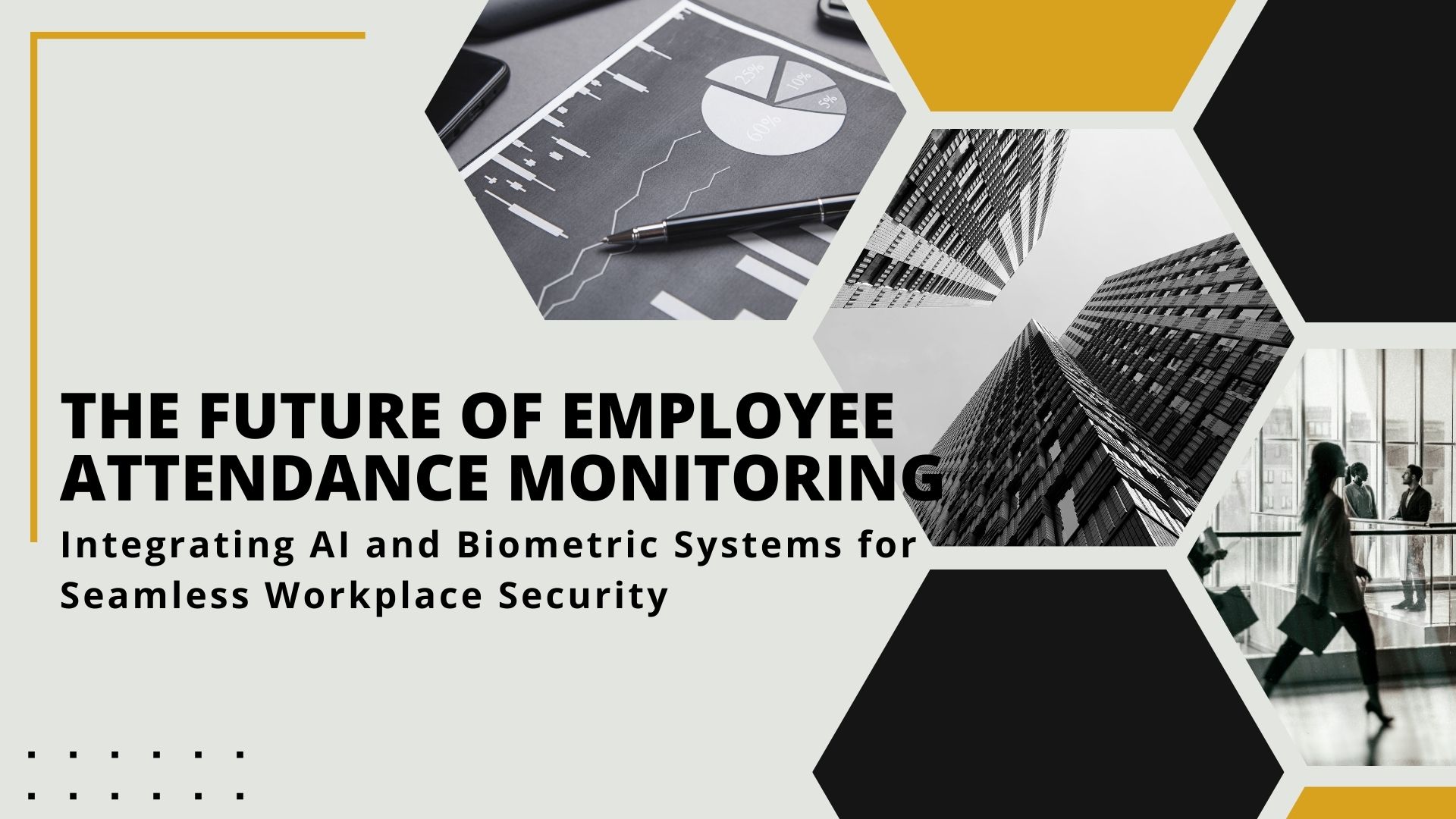In today’s rapidly evolving digital landscape, tracking the attendance of individuals, whether students in a classroom or employees working remotely, is becoming increasingly crucial. The advent of employee attendance monitoring systems has drastically transformed how businesses manage their workforce and maintain security. These systems now track employees’ time and monitor their locations, ensuring sensitive data protection and improving overall productivity.
In this blog, we’ll explore how the invention of modern employee attendance monitoring systems extends beyond traditional clock-ins and clock-outs. We’ll discuss how location tracking can be applied to employee attendance monitoring, like that used for students entering or leaving a classroom. We will also address how these systems help protect business data and manage remote teams more securely and efficiently.
The Evolution of Employee Attendance Monitoring
In the past, attendance monitoring was a simple process of employees marking their arrival and departure on a physical timecard. However, as businesses grew and technology advanced, so did attendance track methods. The introduction of electronic systems, such as badge swipes, biometric scanners, and mobile applications, revolutionized how businesses tracked their workforce.
Employee attendance monitoring now involves advanced systems that track when employees are present and where they are working. These systems can integrate location-tracking technologies, such as GPS and geofencing, to provide real-time data on employee locations in the office or remotely. This development parallels how educational institutions track students entering and leaving classrooms, ensuring accountability and safety.
The Role of Location Tracking in Employee Attendance Monitoring
Location tracking, a feature often used to monitor student attendance, is now being adapted for workplace environments. Similar to how schools use systems to monitor when students enter or leave a classroom, businesses employ location-tracking technology to ensure employees are where they’re supposed to be.
GPS Tracking for Remote Workers: For employees working from home or on the move, GPS-enabled attendance systems can track their exact location when they log in or clock out. This ensures that employees are working from the right location during the specified hours and prevents time theft or manipulation of attendance data.
Geofencing for Workplace Boundaries: Geofencing technology creates a virtual boundary around a designated area, such as an office building or a project site. Employees can only log in or out when they are physically within the set boundaries, ensuring attendance is accurately recorded. This system provides businesses with an extra layer of security, preventing unauthorized clock-ins or outs.
Biometric Location Tracking: Many modern attendance systems incorporate biometric verification, such as fingerprint or facial recognition, combined with location tracking. This method not only confirms the identity of the employee but also confirms their location at the time of attendance. For businesses handling sensitive data, this verification level ensures the security of the employee’s presence and the confidentiality of business data.
Mobile Applications with Location Services: Many companies use mobile apps to track employee attendance. These apps use GPS location services to confirm when employees arrive or leave specific locations. This is particularly helpful for businesses with a remote or hybrid workforce. The ability to track employees’ locations in real time can also ensure they are working in secure and authorized spaces.
Protecting Sensitive Business Data with Employee Attendance Monitoring
As businesses become more digital, protecting sensitive data is more important than ever. Employees can access valuable business information, and tracking their attendance helps ensure this data remains secure. Employee attendance monitoring plays a significant role in safeguarding business data in several ways:
Real-Time Data Security: Employee attendance monitoring systems can integrate with security features that protect sensitive business information. For example, employees can only access confidential data during their recorded work hours, preventing unauthorized access outside of scheduled times. This reduces the likelihood of data breaches and ensures compliance with data protection regulations.
Control over Remote Access: When employees work remotely, controlling who has access to business systems and information becomes more difficult. Attendance monitoring systems can work with VPNs (Virtual Private Networks) and other secure networks, ensuring that only employees who are clocked in and in the correct location can access business resources.
Multi-Factor Authentication (MFA): Businesses can integrate MFA into their attendance monitoring systems to further secure attendance data and company systems. This ensures that even if an employee’s credentials are compromised, unauthorized access to sensitive business data can be prevented.
Audit Trails and Historical Data: Modern employee attendance monitoring systems also create detailed audit trails, recording who accessed what information and when. This feature is critical for ensuring compliance with security protocols and can be valuable in the event of a security breach. Audit trails can help businesses trace any unauthorized access back to the point of origin.
Managing Remote Teams with Employee Attendance Monitoring
Managing a remote workforce comes with unique challenges, especially monitoring attendance and ensuring security. Employee attendance monitoring systems for remote work are crucial in maintaining productivity, security, and accountability. Here’s how these systems can help manage remote teams:
Accurate Time Tracking for Remote Employees: Manual attendance tracking can become a logistical nightmare with employees working from different time zones and locations. An automated attendance monitoring system ensures that employees’ time is tracked accurately, regardless of location. This eliminates any confusion regarding time worked, payroll calculations, and scheduling.
Real-Time Monitoring and Accountability: Remote employees sometimes feel disconnected from their managers or colleagues. An attendance monitoring system gives managers real-time visibility into when employees are clocked in, what tasks they are working on, and whether they are following schedules. This reduces the need for micromanagement and increases accountability.
Virtual Check-ins for Remote Work: Some employee attendance systems allow employees to check in virtually by scanning a QR code or logging into a mobile app. These systems can also include automatic geo-check-ins when an employee arrives at a designated location, ensuring that employees adhere to work schedules while maintaining productivity.
Integrating with Project Management Tools: Many modern attendance systems integrate with project management platforms, allowing businesses to track employee attendance alongside project timelines and deadlines. This integration helps ensure that employees are present and engaged in productive tasks.
Benefits of Employee Attendance Monitoring for Businesses Improved Productivity:
By tracking employee attendance in real-time, businesses can ensure that employees are working the required hours and are focused on tasks. This helps increase productivity, reduce absenteeism, and ensure the workforce is aligned with business objectives.
Cost Efficiency: Automated attendance tracking reduces the need for manual input and saves time. This means less overhead for businesses in processing attendance and payroll, making the system cost-effective and efficient.
Compliance with Labor Laws: Accurate attendance records are essential for maintaining compliance with labor laws, particularly regarding overtime, break times, and paid time off (PTO). Employee attendance monitoring ensures businesses can easily track and comply with these regulations.
Better Security and Fraud Prevention: Location tracking and biometric verification reduce the likelihood of fraud, such as buddy punching (where one employee clocks in for another). This added layer of security helps businesses protect themselves from time theft and data breaches.
The invention of modern employee attendance monitoring systems has significantly changed how businesses track their workforce. By incorporating advanced technologies like GPS tracking, geofencing, and biometric verification, these systems ensure that employees are where they need to be, and that sensitive business data remains protected. Whether managing in-office employees or a remote workforce, the right attendance monitoring system can provide businesses with the security, productivity, and efficiency needed to thrive in a digital world. By using these advanced systems, businesses can ensure that their employees are accountable, secure, and productive—no matter where they work. The evolution of attendance monitoring technology continues to reshape how organizations manage their most valuable resource: their employees.
Sources:
- Business Insider – https://www.businessinsider.com/
- Shure – https://www.shure.com/
- CIO – https://www.cio.com/
- TechCrunch – https://techcrunch.com/
- Gartner – https://www.gartner.com/en





